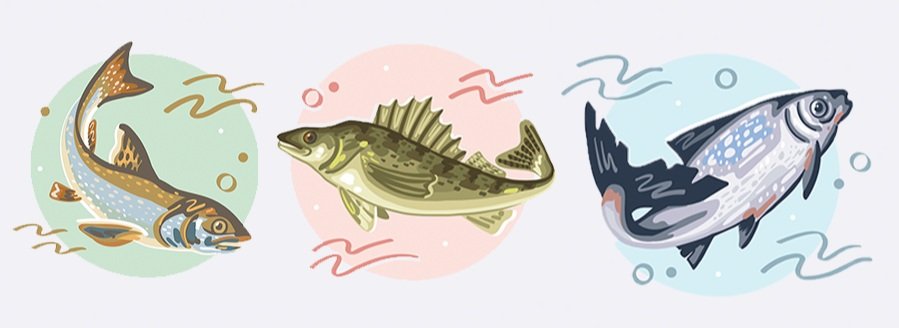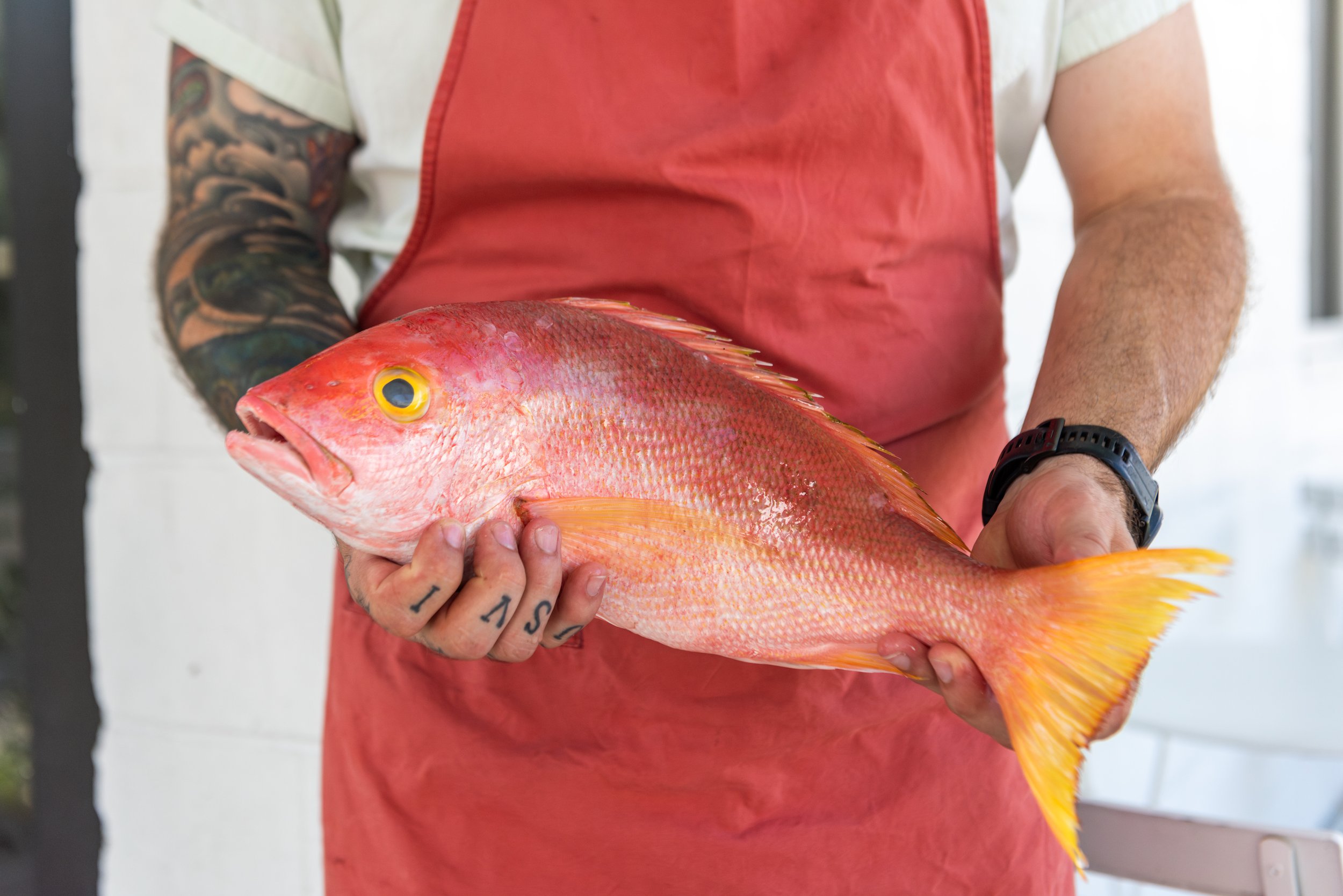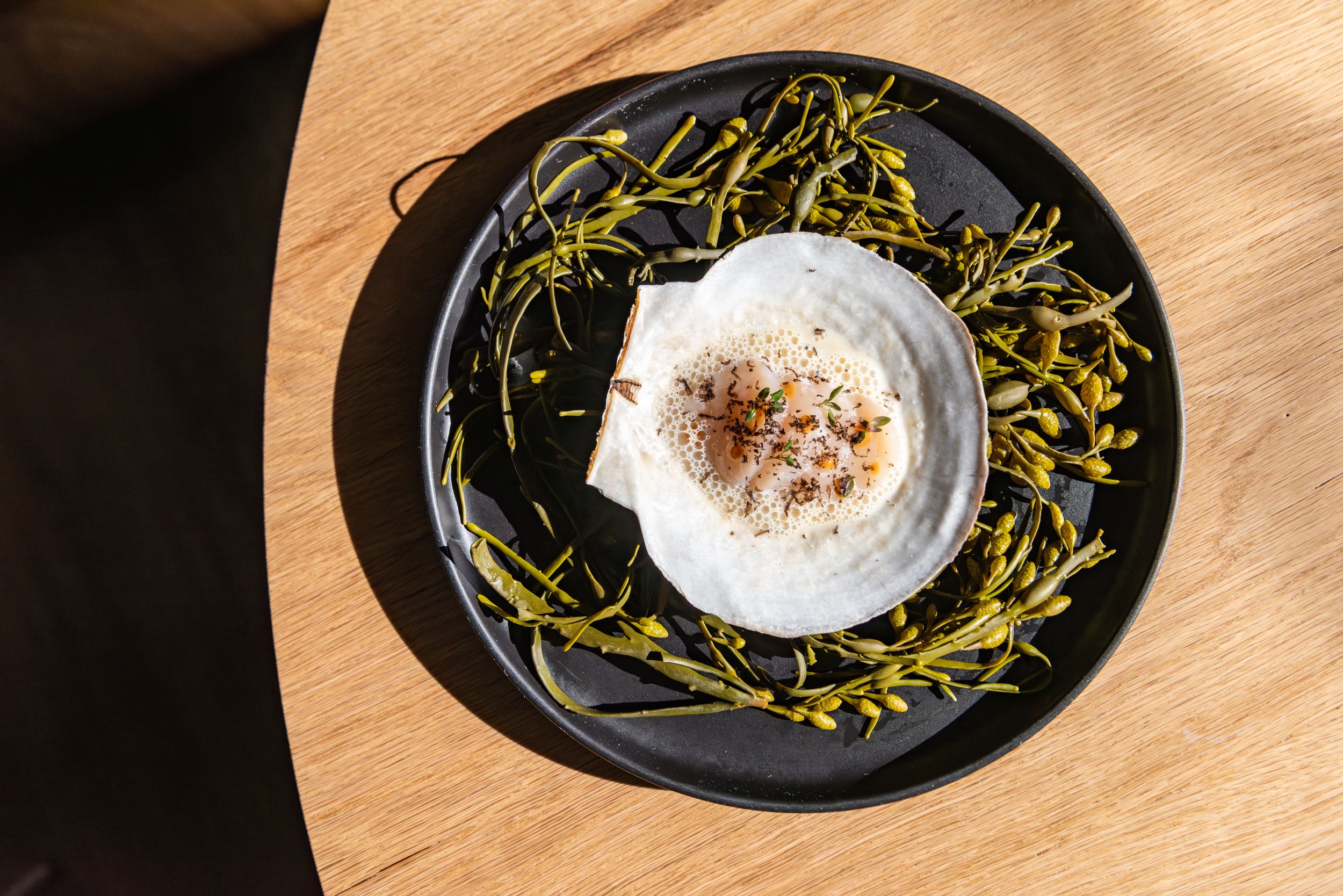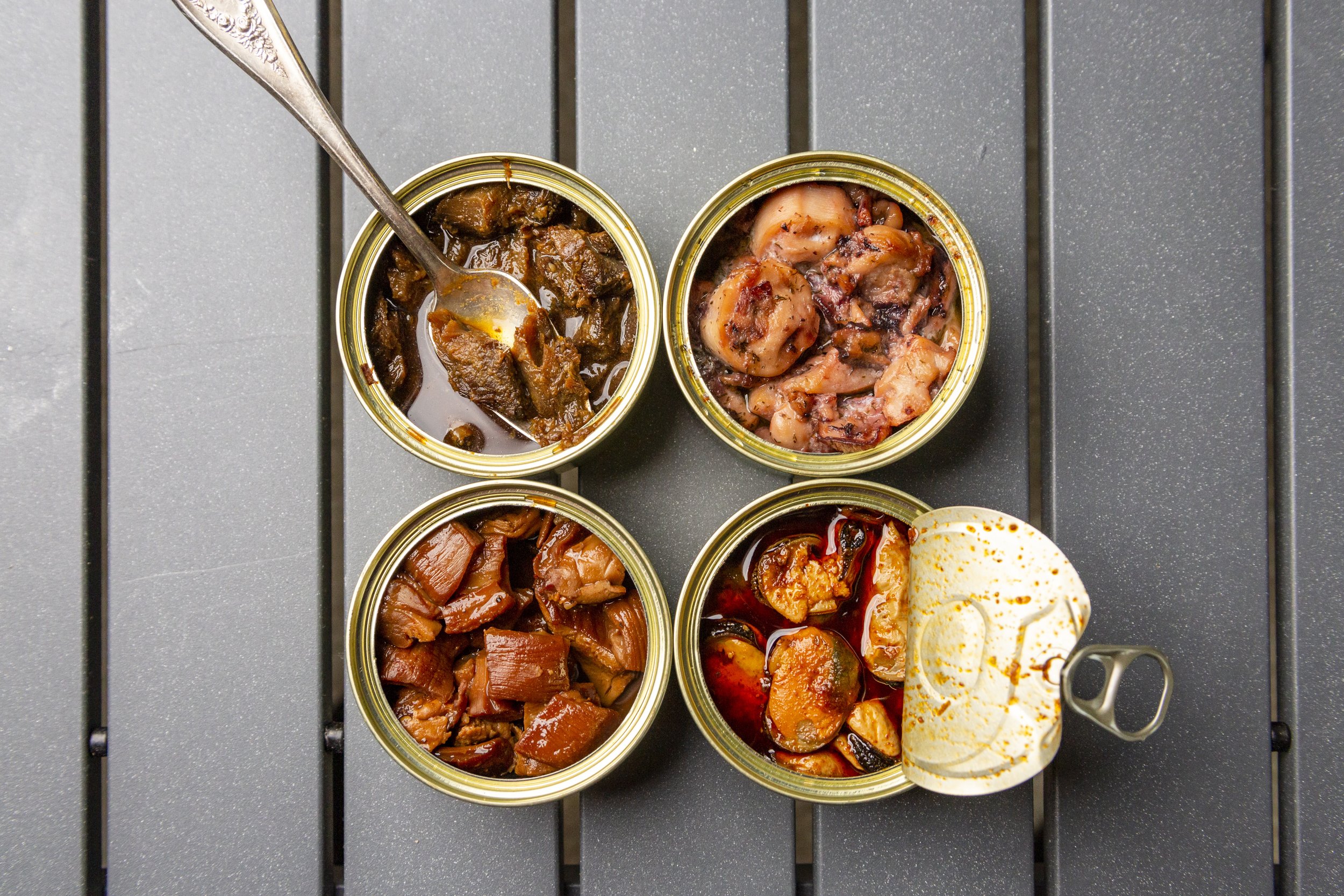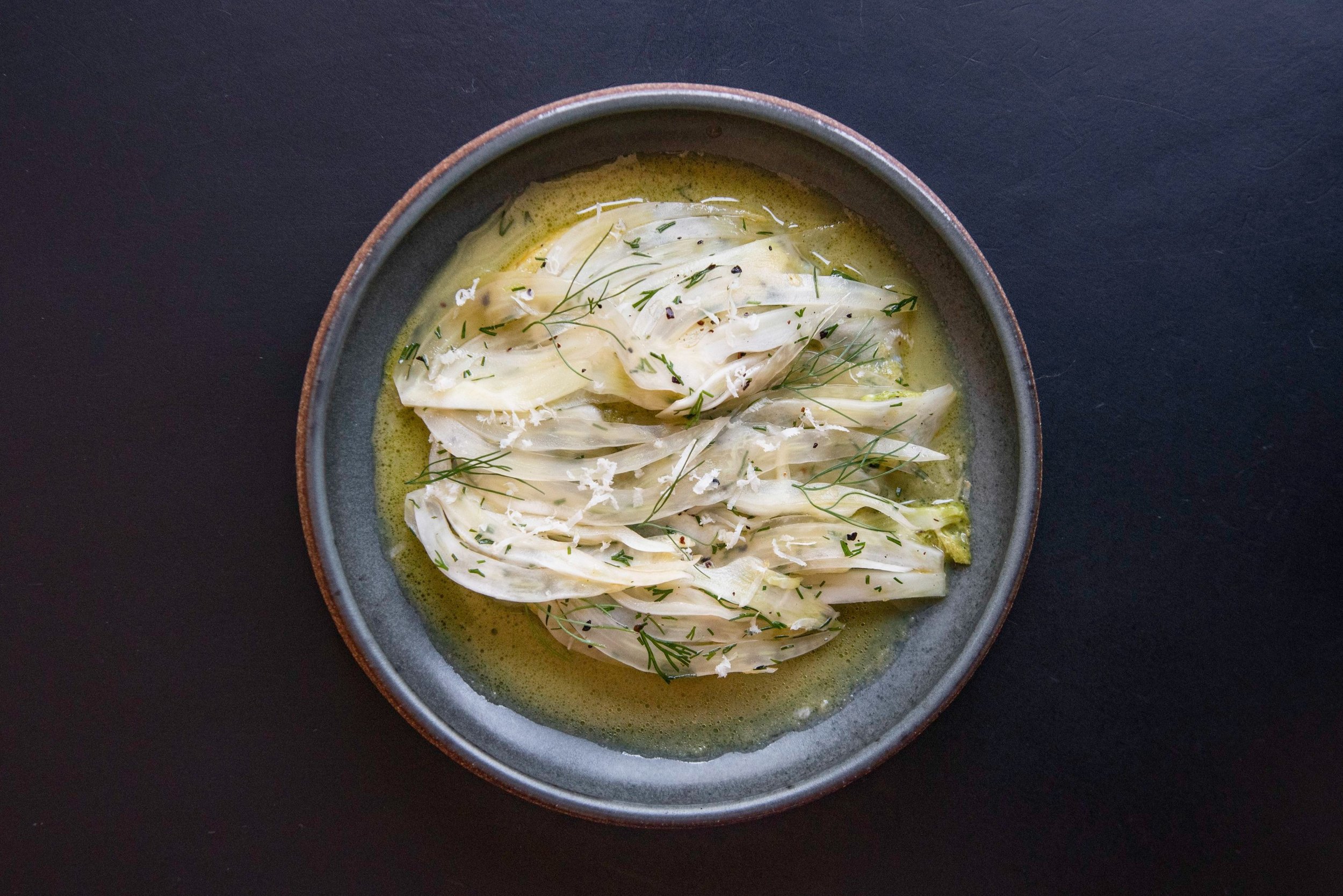Lake Effect
Lake fish haven't always had the best reputation, but Chicago chefs are using them to their full advantage.
illustration: Rachelle Vagy
As soon as the ice melts in early spring, the Lake Michigan commercial fishers are out. Mostly using trap nets, their day boats chug out onto water that Amber Mae Petersen, secretary and treasurer of the Michigan Fish Producers Association, says is cleaner than it’s been in 20 years, mainly due to cleanup efforts.
Once the boats return to the docks for the day, the commercial fishers either fillet the catch for the markets or dress the fish and ship to a processor. This middleman is usually close enough to the point of sale that it doesn’t need to add preservatives or freeze the product before distributing to restaurants.
Outside of the Midwest, lake fish are sometimes known for being dirty or polluted; some chefs think that stagnant water gives fish a bad flavor. “The Great Lakes are not stagnant. Anyone who's actually swam in them knows that there’s a strong current,” says Petersen, who also founded The Fish Monger’s Wife to retail her family’s fish.
Chef Thomas Carlin of Galit uses lake fish all the time for their affordability and to show diners that the fish are worth protecting through conservation. “Restaurants are best-received when they say something about the time and place they are in or tell the story of the people involved in it,” he says. “People seem to forget that Chicago sits on the edge of the fifth-largest freshwater lake in the world.” Whether they migrate in, bottom-feed in the cold, or linger in shallow waters, Great Lakes fish have a wide range of flavors and textures. These three species appear all over Chicago menus—and can be just as compelling on the plate as their saltwater counterparts.
WHITEFISH
Due to government regulations and a surprisingly fierce political battle between commercial and sport fishing, whitefish is probably the best-known Great Lakes fish. According to government and university research, 99.9 percent of commercial fishing on Lake Michigan is whitefish with lakes Superior and Huron not far off. Consumer preferences aren’t the drive behind this. Whitefish are the only thing non-tribal fishing companies are permitted to regularly catch in Michigan, besides “rough catch” like carp, catfish, and suckers.
But whitefish did become a staple for a reason. For his beer-battered Fry Life sandwich, Ørkenoy Chef Ryan Sanders chose whitefish for its flakiness and ability to withstand frying. “The crunchy beer batter and flaky whitefish interior are what make the sandwich one of our best-sellers on the current menu,” he says. And one of the biggest advantages is that it’s cheap. “Whenever we are able to put a fish-centered dish on the menu at a reasonable price, our guests get really excited about it, and it nearly always becomes a strong seller. Locally sourced, freshwater fish has made that possible for us.”
LAKE TROUT
Closely related to salmon and char, lake trout are similar in taste to coho but fattier because they eat a lot, amass fat during their relatively long lifespan, and swim in the deepest, coolest parts of the Great Lakes. “It gets cold up here, y'all!” Carlin says. “Because of this mild-flavored flesh with great fat content, we are able to get really nice smoked fish.” For a play on a whitefish salad, he serves the smoked fish with rye, labneh, harissa, preserved lemon, and trout roe. The creamy dish with notes of maple is well-served by the lake trout, which Carlin thinks has a better flake than whitefish.
Sanders likewise uses smoked lake trout to reintroduce a favorite. His play on a niçoise at Ørkenoy features gem lettuce, endive, capers, and a chive and horseradish dressing. He says, “The smokiness and [fatty] texture of the fish complement the horseradish and cream in the dressing to create a really strong base for the dish.”
WALLEYE
Rising Star Chef Ryan Brosseau’s Canadian customers call them pickerel. At the Southern-inflected Virtue Restaurant, Rising Star Chef Damarr Brown says “mud bugs.”
Dwelling in warmer water than whitefish or lake trout, walleye have a mild lake flavor but a flake like mahi mahi. “People who don’t like a fishy taste wouldn’t be into it,” Brown says. His buttery, lemony étouffée with shrimp and crawfish (full recipe here) balances the fish and sells out every night during the walleye’s short season.
After growing up on the Detroit River, where the fish migrates, Brosseau knows how to build a plate around a walleye. At Dear Margaret, he pan-roasts the fillet and makes a funky sweet and sour kale with a gastrique of maple syrup and malt vinegar—all leaning into the fishiness.

